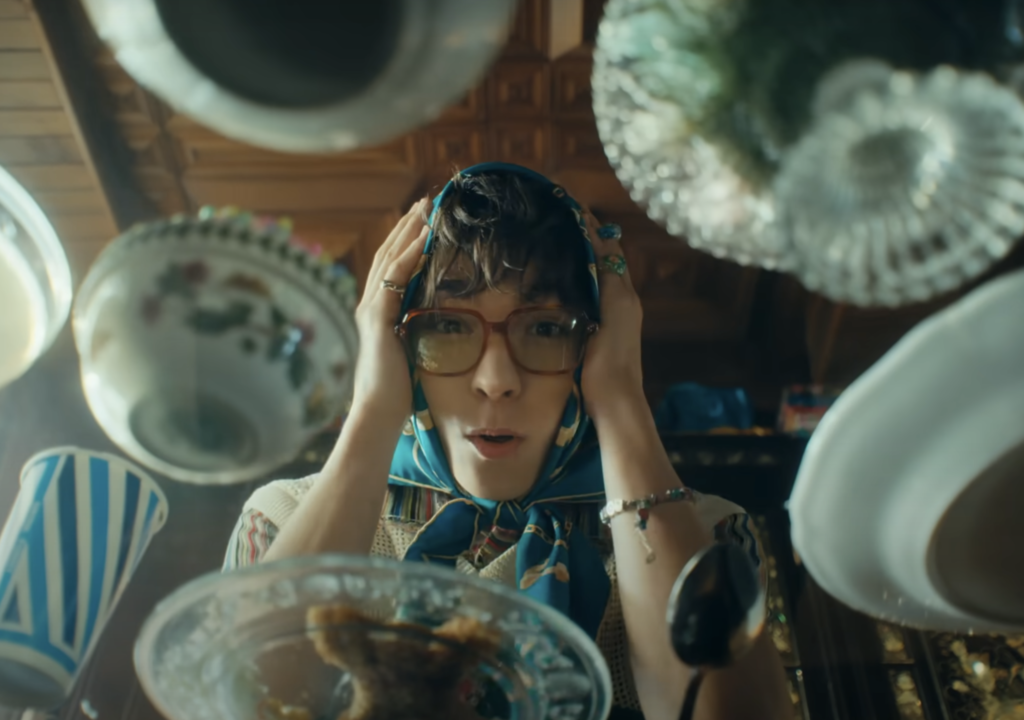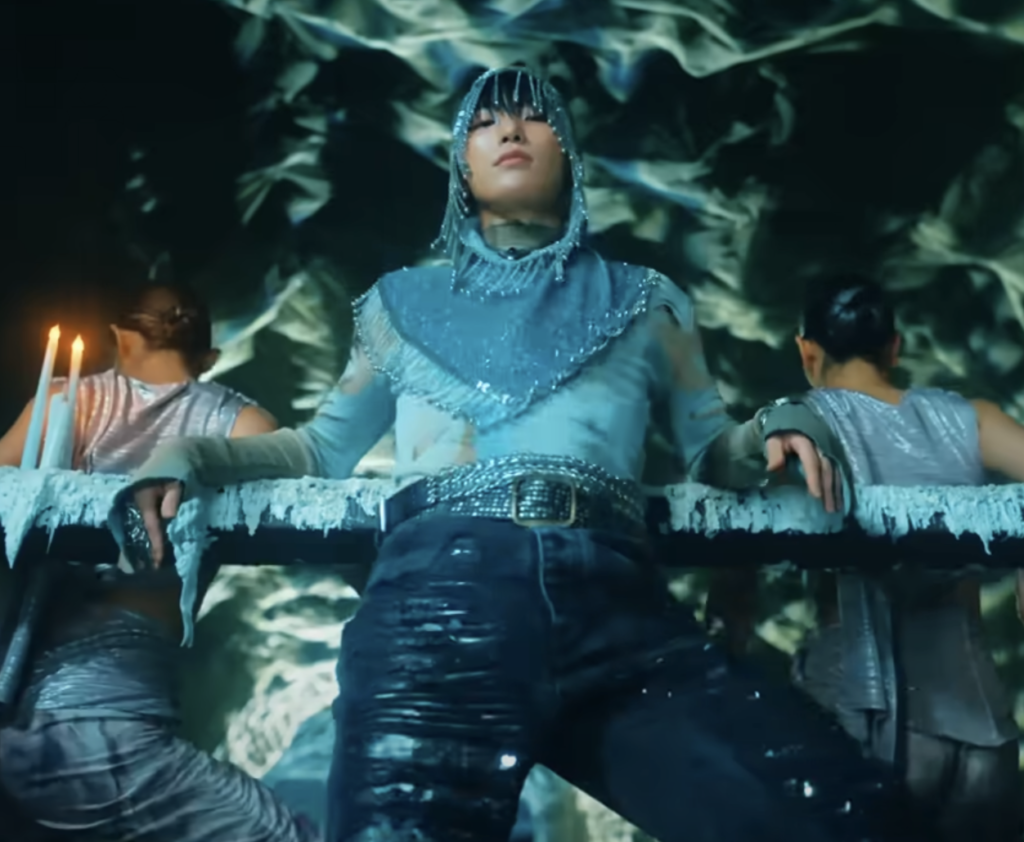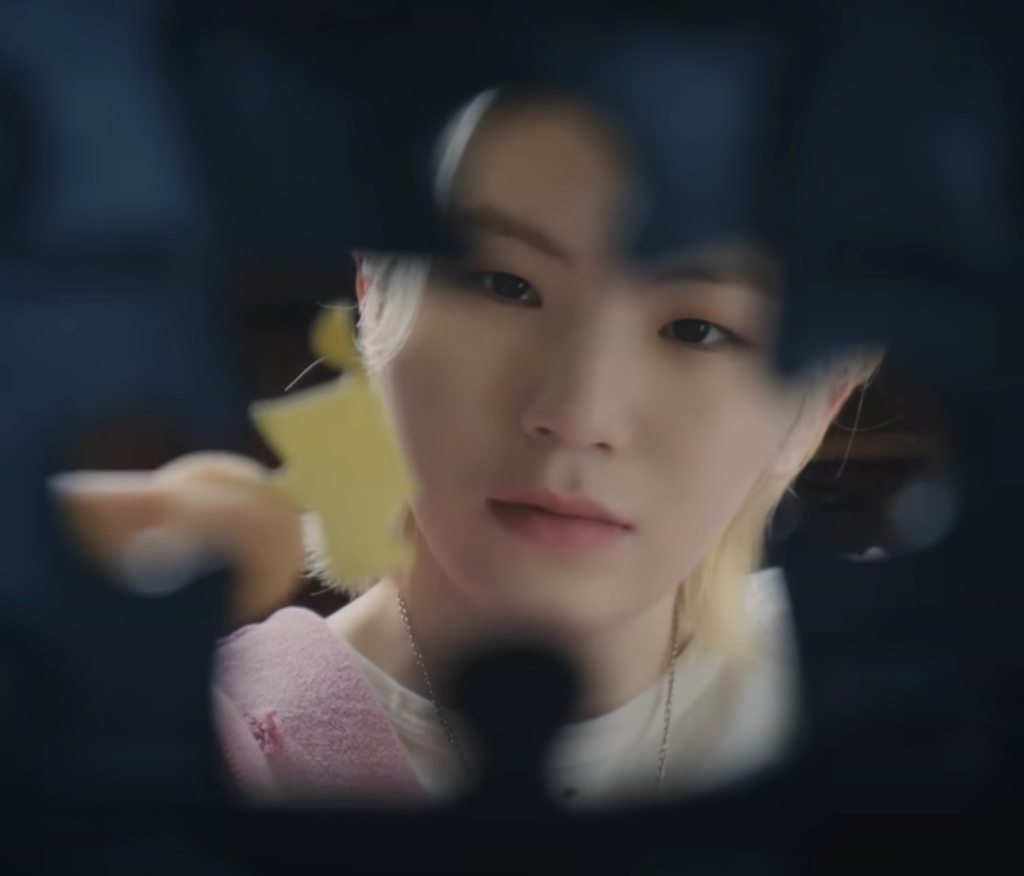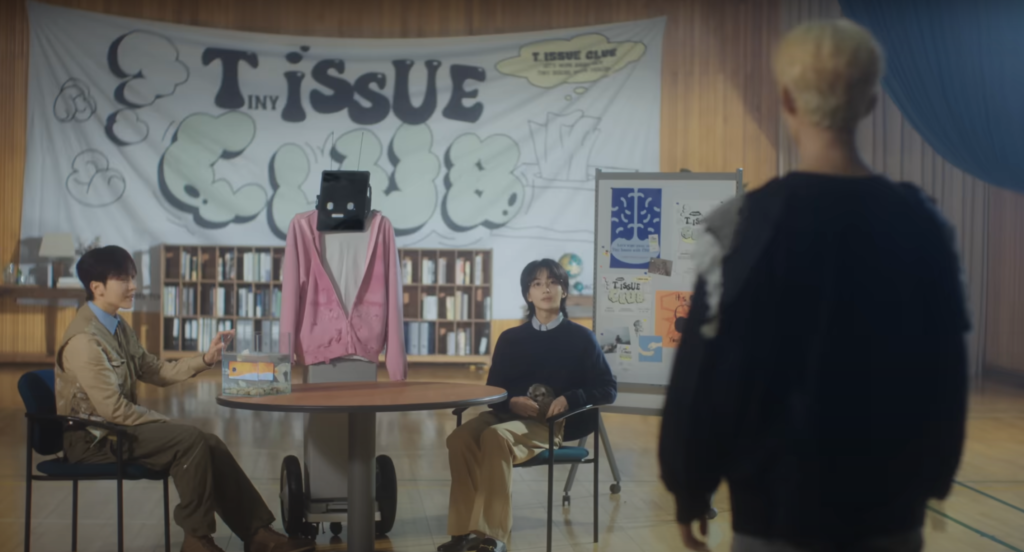
Seventeen’s 17 is Right Here is an anthology album surveying their 9-year career. The album featured only four new tracks, one with all thirteen members and three unit songs. Following title track “Maestro,” three B-side MVs came out weekly throughout May: “Lalali” from the hip hop team, “Spell” from the performance team, and “Cheers to Youth” from the vocal team. Though all the MVs came from the same producers and directors, they are distinct musically and aesthetically, representing the essence of each unit.
“Lalali” plays off the word “nalali,” meaning a delinquent or rebellious person. Fittingly, the hip-hop team members disregard the norms of their surroundings. For instance, a headscarf-wearing Vernon sassily raps as elderly ladies dance around him, and then they all flash a middle finger as he raps, “F*ck the neighbors.” This scene encapsulates the irreverent humor throughout much of “Lalali.” In another cheeky moment, S.Coups absurdly wears a fur coat in a sauna and winks at other spa patrons.
The members do not rebel without a reason – they direct their contempt towards their critics. In the first verse, Mingyu dismisses comments about how much the members of a large group earn:
Split the money in one thirteenth
But still stuffed, one shot, hundred kills
SVT can’t stop it
I leave footprints on the globe
Mingyu contends that Seventeen are so successful that every member would be “stuffed” with cash. The second verse sounds even more aggressive, with Wonwoo’s growling delivery (particularly at the line “I told you I’m a monster”) and S.Coups mimicking the sounds of “I spit on your microphone” in his delivery.
The song maintains high energy, supported by the camera work and editing. The camera consistently tracks back and forth, and in a few scenes whip pans from member to member. The second half of the MV displays the hip hop unit in multiple low angle shots, a classic technique to portray the subjects as big and powerful. These shot choices aptly reflect the hip hop unit’s larger-than-life attitude.
In contrast to “Lalali”’s swagger and playfulness, the Afrobeats-inspired “Spell” from the performance team conveys romance and enchantment. Borrowing imagery from tarot cards and classical mythology (with Jun appearing as Apollo), “Spell” has a mystical aesthetic and might be the most visually stunning video Seventeen has ever released.
The vivid cerulean blue and white in the members’ outfits recall the “ocean view” described in the lyrics, and shining silver makes them look like knights. Similarly, the makeup, especially the heavy shimmery shadow at the corners of their eyes, add to their ethereal appearance.

Some of the backgrounds appear to be relatively spare sets, simply composed of lights or waterfall effects. These sets reinforce the atmospheric feeling of intimacy that the song and video exude. Other backgrounds consist of landscapes (beaches, caves, snow-covered mountains under an aurora), but have an almost flat, but beautiful painterly quality, like in a tarot card.
The song’s lyrics suggest that the “spell” is the deep and intimate connection that the speaker has with his lover. The chorus repeats “Adilla kia akia syurapoe,” words invented by the song that represent “a language only we know.” The rest of the song upholds the feeling of an incantation in its repetition of “oh a yayaya,” while Dino, Hoshi, and The8’s lower registers in the verses feel seductive. “Spell”’s choreography, with synchronized hip rolls and body waves, also contribute to the alluringly hypnotic effect. Of Seventeen’s music videos, “Spell” most effectively captures a mood through all aspects of sound and visuals.
Unlike “Spell,” the vocal unit’s “Cheers to Youth” is a more story-based MV, providing comfort for those experiencing self-doubt. In the first verse, Seungkwan and DK sing, “I want to be by myself but I don’t want to be alone. Even I can’t understand myself,” presenting relatable conflicts between the desire to connect and the coping mechanism of self-isolation. The MV depicts the vocal team members with individual struggles: for example, Jeonghan is losing his vision; Woozi does not leave the house and sets a robot out for groceries; and DK, a student, struggles with his exams.

The video illustrates that our self-perceptions might be limited. Office manager Joshua visualizes himself as a meerkat, peeking at others over the cubicles, but his co-workers appreciate him watching over them. In an early scene, he is standing in the rain, and later on, a colleague writes a note thanking Joshua for lending his umbrella. In other cases, the surreal imagery seems to represent a member reframing what he is struggling with, as Seungkwan’s phone falls into water and morphs into a goldfish, a much more innocuous thing than the blaring phone alert that causes him anxiety.
At times, the imagery might seem too self-referential – DK has a pet rock, which he and Jeonghan both actually own in real life, and a tiger appears in the support group at the end. It makes Hoshi’s trademark horanghae claw pose in a nod to him saying, “It’s my first time living today,” which inspired Woozi to write the song. These whimsical touches do fit with the overall tone of the video, with light, humorous surrealism keeping it from veering too much into sentimentality.
“Cheers to Youth” does have a message to share. As the chorus proclaims over a buoyant melody with brassy flourishes:
On my way home today, I’ll tell myself I did okay
That it wasn’t easy but it wasn’t too bad either
That in this suffocating world
I still found little things that made me smile

The lyrics state that “little things” made them smile, and in the MV, those things are moments of connection. This becomes particularly evident when each member discovers a card for a support group called the “T(iny) Issue Club.” At first, they appear as the manifestations of their neuroses (Woozi as the robot, for example). Over time, they begin to find acceptance from one another and emerge as their true selves. It even turns out that Jeonghan does not need his glasses to see his new friends clearly. “Cheers to Youth” ends up demonstrating the positive, transformative potential of community.
The sequence of Seventeen’s MV releases makes sense, with the powerful self-confidence of “Maestro” and “Lalali” giving way to the slower-tempo “Spell” and “Cheers to Youth,” depicting different types of human relationships. The vocal unit video in particular reflects the value of a found family that is central to Seventeen’s appeal. The B-side MVs represent the spectrum of colors that Seventeen’s units can bring, conveying both the belief in oneself and the value of bonds with others.
(YouTube. Lyrics via YouTube. Images via Pledis Entertainment/Hybe).
0 Comments